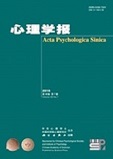Trait anger is a widely recognized susceptibility personality factor for reactive aggression. However, to the best of our knowledge, the longitudinal effect of trait anger on reactive aggression is unclear. More importantly, even though reactive aggression differs from proactive aggression by their motivations, the motivation mechanism underlying the effect of trait anger on reactive aggression is not known. Thus, the present study attempts to explore the longitudinal effect of trait anger on reactive aggression, and the mediating role of reactive aggression motivation, as well as the relationship between the two different motivations. Reactive aggression refers to the behavior or tendency to respond to perceived provocation with hostile and angry feeling. It is also called impulsive, hostile, or hot-blooded aggression. The motivation of the reactive aggression is comprised of hostile motivation (unique motivation) and moral approval motivation (common motivation). Hostile attribution bias is a typically representative variable of hostile motivation, and moral disengagement is the representative variable of moral approval motivation.
A three-wave longitudinal study with the time interval of 6 months was conducted to test our hypotheses. A total of 1007 undergraduates (mean age = 19.00 years, SD = 0.99) from 5 provinces in China completed a series of questionnaires concerning trait anger, hostile attribution bias, moral disengagement, reactive aggression, and proactive aggression in their classrooms. SPSS 20.0 was used to conduct churn rate, reliability, and common method bias tests, and to calculate descriptive statistics. Mplus 7.0 was used to conduct item parceling and structural equation modeling. A cross-lagged model was developed for trait anger predicting reactive aggression from hostile attribution bias and moral disengagement. Moreover, longitudinal relationships among trait anger, hostile attribution bias, moral disengagement, and proactive aggression were also tested.
The results indicate that there is no serious churn problem for participants, for all variables considered. All measurements show good reliability, and there is no serious common method bias. Moreover, trait anger at Wave 1 significantly predicts hostile attribution bias and moral disengagement at Wave 2, hostile attribution bias and moral disengagement at Wave 2 significantly predict reactive aggression at Wave 3, moral disengagement at Wave 1 significantly predicts hostile attribution bias at Wave 2, and hostile attribution bias at Wave 2 significantly predicts moral disengagement at Wave 3. After controlling for gender, trait anger at Wave 1 significantly predicts reactive aggression at Wave 3 through hostile attribution bias and moral disengagement at Wave 2. Furthermore, the path of hostile attribution bias predicting proactive aggression is non-significant. Moral disengagement at Wave 1 significantly predicts proactive aggression at Wave 2.
This study supports that idea that trait anger would facilitate reactive aggression, and further suggests that trait anger could longitudinally predict reactive aggression through the mediating role of reactive aggression motivation (including hostile motivation represented by hostile attribution bias and moral approval motivation represented by moral disengagement). The present study constructs a motivational model of personality and reactive aggression, and hence develops the theories and study of personality and aggression. Moreover, the findings of this study suggest that prevention of, and interventions for, reactive aggression could usefully focus on the personality and motivational factors of aggression.




